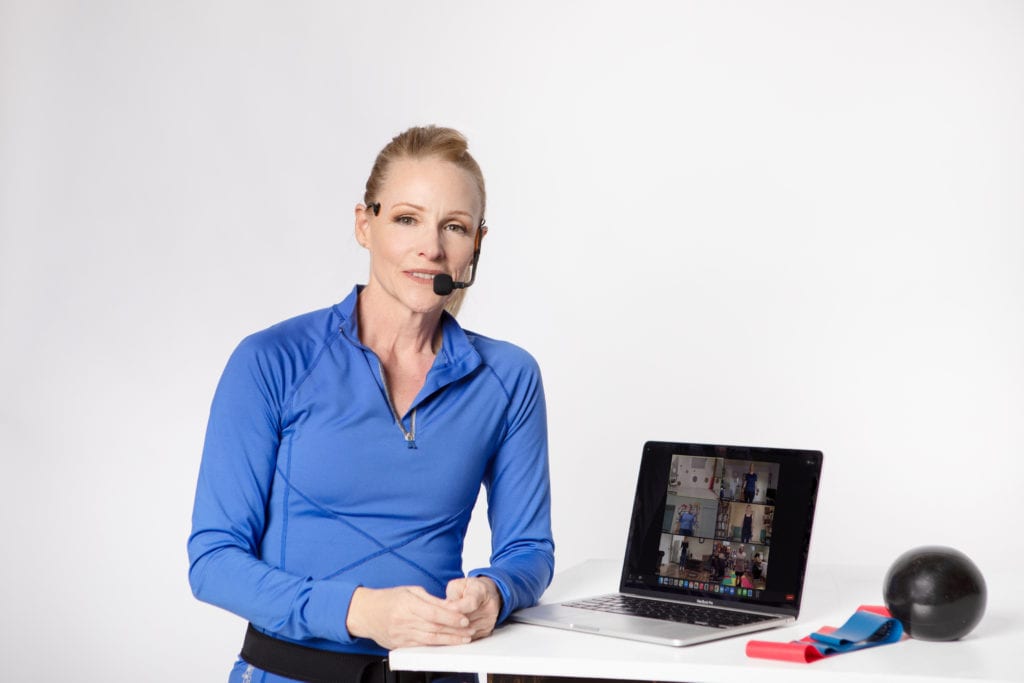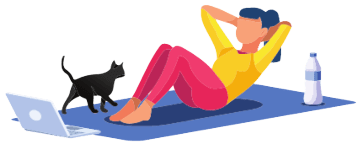You’ve decided it’s time to pay closer attention to your health and wellness, and you want to begin exercising as part of your new focus. You’ve heard about exercise testing to determine fitness levels, and you may wonder if these tests are right for you.
Any exercise enthusiast who’s seen the benefits of testing before beginning a journey into greater physical health will shout a resounding…Yes! And every personal trainer knows that testing is always the correct first step. Fitness testing is paramount to beginning any exercise routine. It sets you up for success. Whether you’re keenly self-motivated, or need the assistance of a skilled trainer, the results from testing help to design an appropriate fitness plan, all based on your needs, and all based on the testing results. And from the testing results, measurable, attainable goals are set. Goals set with this in mind can then be retested with ease and often, giving you feedback about your routine’s effectiveness.

In this column, I’ll share with you one of the easiest tests to perform: the Rockport One Mile Fitness Walk. There’s no special equipment needed and it’s suitable for most everyone. The test primarily measures walking speed, which is a good indication of heart and lung capacity. In later columns, I’ll offer insight into other tests. But for now, let’s start at the beginning.
Walking is one of the most natural ways of getting around, and research supports that a faster gait also supports greater vitality—gait speed is essentially a health predictor, especially in older adults.
A great is start is with the Rockport One Mile Walk Test because it measures walking speed. This is an entry level test for most newcomers to exercise, or it’s used by those who want to take their walking routines beyond—into more intense and powerful levels—using brisk walking as an introduction to higher intensity exercise.
To do the test, head out to a local park where the surface is level and flat, then map out the distance. If you’re not sure of the distance, an app like MapMyWalk is easy to use, just download to your phone. Or step onto a local track, determine how many loops you have to make to complete the mile, then go. A treadmill works fine, too, keeping the incline at zero.
Do a few minutes of a warm-up—walk at a normal speed for 5-8 minutes, then get set to speed up. But don’t be tempted to break into a jog—it’s strictly a walk. Then you’re off, setting the quickest pace you’re able to sustain. Once you’ve completed the mile, record the walk speed, along with the maximum heart rate that was captured by using your chest-strap heart rate monitor. It you’re not wearing a heart rate monitor, take your 6 second pulse immediately upon finishing the walk, then multiply by ten. Record this number, you’ll need it next. (Do keep in mind that most wrist-worn monitors are not accurate for testing purposes.)
To determine your walking score, so that you can compare with normative charts, you’ll need a specific formula. You also need to have your weight and height handy to plug into this formula. This is called a VO2 max calculation, and a quick search of the internet will show you the formula you need to determine your baseline score. Do the math. Next, looking at the chart, find your score. Most charts are broken down into various levels of fitness, and listed by age and gender.
With this baseline score, you’re ready to set any number of goals. You may choose to increase your walk speed; ideally, if your one mile walking speed took 20 minutes or longer, one goal could be to walk a faster mile. You may want to improve your exercise heart rate (raise it) or improve your resting heart rare (lower it)—often these two goals go hand-in-hand. Maybe weight-loss is a goal. Again, all these goals are measurable, and the walk test is repeatable. It takes less than an hour to get the test results, too.
If you’re new to exercise, I hope you’ll try the walk test. There are many other tests to determine other aspects of fitness, but this is by far the easiest to do. Good luck with the test, then use the results to set goals for improving your health and wellness.
As always, check with your healthcare provider before beginning any new fitness quest.

This article offers a fascinating perspective on the subject. The depth of research and clarity in presentation make it a valuable read for anyone interested in this topic. It’s refreshing to see such well-articulated insights that not only inform but also provoke thoughtful discussion. I particularly appreciated the way the author connected various aspects to provide a comprehensive understanding. It’s clear that a lot of effort went into compiling this piece, and it certainly pays off. Looking forward to reading more from this author and hearing other readers’ thoughts. Keep up the excellent work!
Thank you for reading, and I hope you’ll come back for more information about how to create a well-designed exercise program for yourself.
Fantastic article! I appreciate how clearly you explained the topic. Your insights are both informative and thought-provoking. I’m curious about your thoughts on the future implications of this. How do you see this evolving over time? Looking forward to more discussions and perspectives from others. Thanks for sharing!
Fitness testing remains paramount in beginning any training program. Thank you for taking the time to reach out.